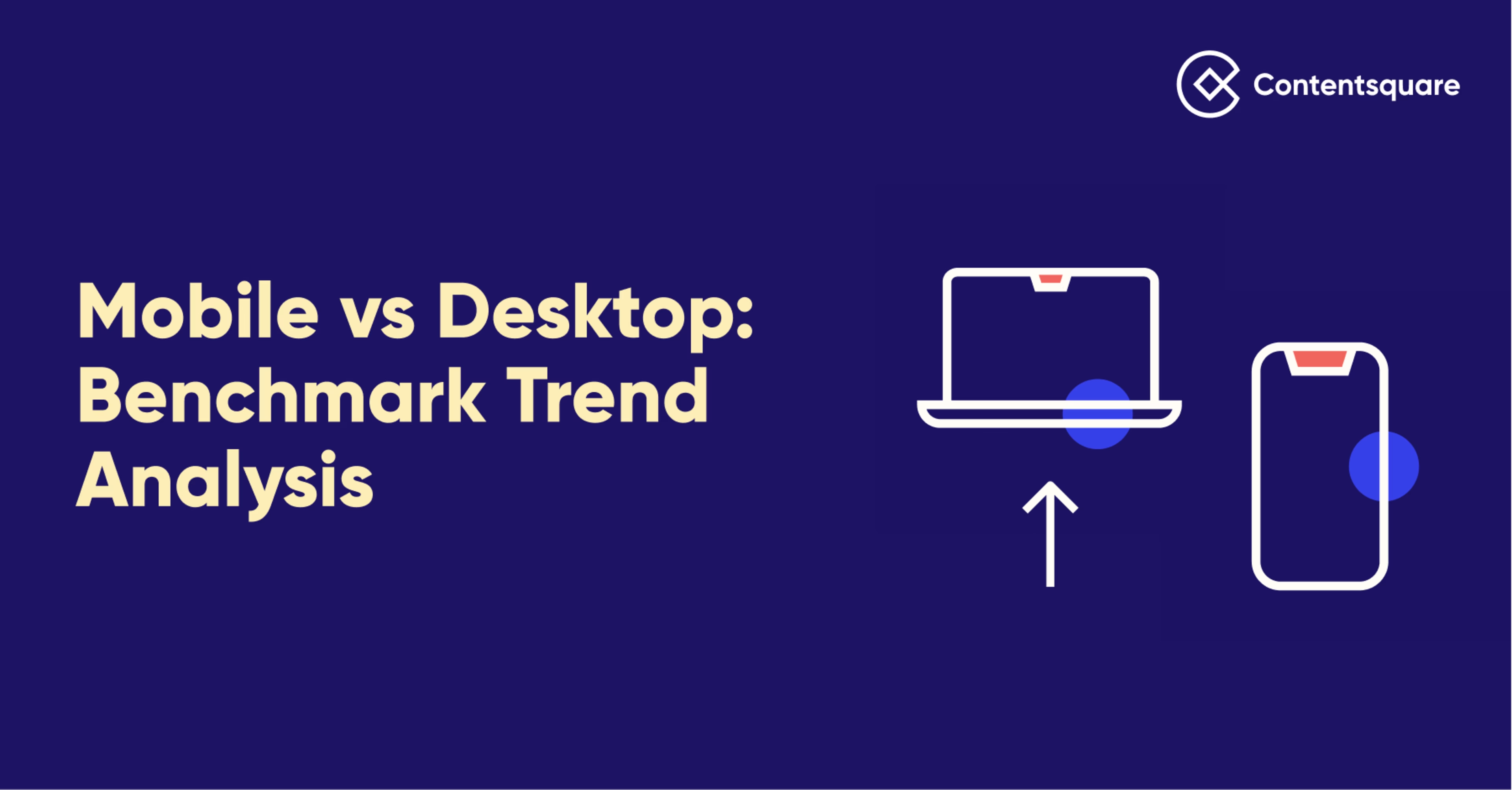Mobile vs desktop: How do users use these devices differently—and should the digital experience be adapted to cater to these differences?
These are questions that any digital team has to concern itself with nowadays. From shopping and browsing social media to catching up with friends and reading the news, users commonly switch devices throughout the day. This makes optimizing your digital experience a more nuanced process than we might like.
We dug into our 2022 Digital Experience Benchmark Report data to give you the latest trends and insights on mobile vs desktop usage, in the process answering questions like:
Which device did consumers prefer in 2022?
Is mobile really the way forward?
How does digital behavior differ according to device?
Mobile vs desktop usage in 2022: Mobile still dominated…
And the winner is… MOBILE.
58% of all online visits came from smartphones in 2021. If you read our report last year, you’ll know that mobile was already taking the lead with 64% of all online traffic in 2020.
… But it’s declining
This -9% year-on-year decrease in mobile traffic shows that desktop is still critical to online life.
It’s important to note that the number of websites we studied has almost doubled from 2020 to 2021. This has led to a strong increase in the number of sessions we’ve analyzed and, inevitably, may have diluted these figures a little. Also, our data only shows mobile web traffic and doesn’t take into account traffic on mobile apps.
Mobile vs desktop usage: How important is mobile?
Looking back just a few years, we were touting a mobile-only world (with algorithm updates from Google and huge advancements in smartphone technology helping to bolster this claim). But today’s consumer is happy to shop on both desktop and mobile and we expect seamless experiences on both—so your strategy should reflect that.
So although mobile was the device of choice for many of us, desktop still accounts for 39% of all online traffic. This slim margin indicates desktop sessions are still critically important to optimize!
Moreover, the device you prioritize will also depend on your industry. We noticed for example that luxury, cosmetics, and pharmaceuticals have a significant majority of traffic on mobile (between 73% and 76%). Something to think about!
So why are conversions mostly on desktop?
If the majority of users are on mobile, then shouldn’t the majority of conversions come from mobile too?
Think again! Our data showed that the desktop is still the winner when it comes to converting customers.
Average conversion rate per device across all eCommerce industries
Device | Average conversion rate |
|---|---|
Desktop | 3,7 % |
Mobile | 2,2 % |
Conversion rates are almost twice as high on desktop devices, which suggests that users prefer to browse on their mobile devices and make purchases on their computers or laptops.
Interestingly, conversion rates improved slightly on desktop too, going from 2.3% in 2020 to 3% in 2021. This solidifies the fact that brands need to optimize experiences across all devices to truly succeed.
Understanding your mobile vs desktop spilt
It’s absolutely essential that you understand your mobile vs desktop split and prioritize your digital strategy accordingly.
If the majority of your traffic is via desktop, yet conversion rates are noticeably higher on mobile—or vice versa—it’s time to reconsider where you invest your time and resources for the biggest returns. How can you better incentivize your mobile customers to get more shoppers browsing via mobile?
Or, if desktop generates a much higher average order value, how can you better streamline your mobile to the desktop experience, such as allowing users to save items on mobile to then finish the conversion on desktop?
Download our full report to get all the industry-specific data and insights to fuel your strategy.
![[Visual] Marie Jehanne](http://images.ctfassets.net/gwbpo1m641r7/Nvxc8azmoFtOOJzSCgLcl/8a9c72b4f2b60791db3d7e483089ffe2/T027K0ZC9-U01Q5MREAJ0-b3bc3a6ce0bf-512.png?w=1080&q=100&fit=fill&fm=avif)
Passionate about digital for several years, I am a Senior Content Manager at Contentsquare. My goal? To teach you how to improve the digital CX of your website and activate the right acquisition levers to generate more traffic on your site and therefore…more sales!
